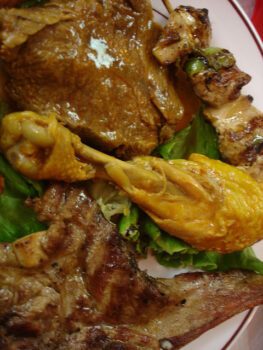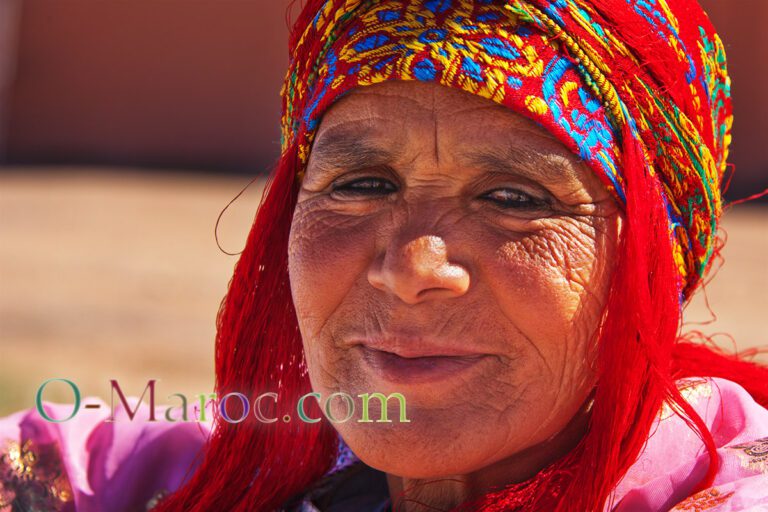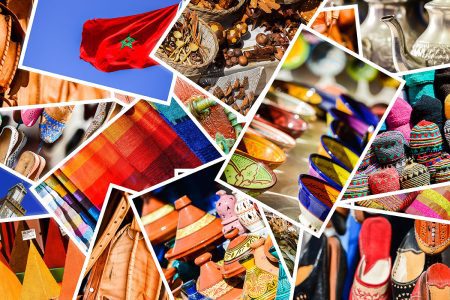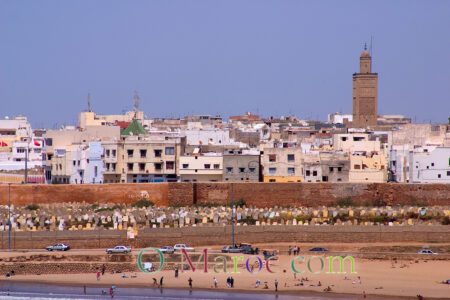Thirteen days “late”, in fact in accordance with the Julian calendar, the Amazighs celebrate the New Year today. Many Berber traditions can be traced back to Roman times, at least before Islamisation. For example, their саlеnԁаr, whose names are derived from Roman names and have replaced other, older names, can still be found in Tuareg writings from the Middle Ages:
| Month | Ancient names | Assumed significance | Chleuh (Southern Morocco) | Moroccan Arabic |
|---|---|---|---|---|
| January | tayyuret temzwarut | First moon | innayr | yennayer |
| February | tayyuret tenggwerat | Last moon | xubrayr | febrayer |
| March | yardut | mars | mars | |
| April | sinwa | ibrir | abril | |
| May | tasra temzwarut | First herd guarding | mayyuh | mayou |
| June | tasra tenggwerat | Last herd guarding | yunyu | younyou |
| July | awdayeɣet yemzwaren | First antilopers | yulyu | youlyouz |
| August | awdayeɣet yenggweran | Last antilopers | γuct | ghoucht |
| September | awzimet yemzwaren | Gazelle’s first young | cutanbir | choutanbir |
| October | awzimet yenggweran | Gazelle’s last young | kṭuber | ouktoubr |
| November | ayssi | duwanbir | nuwanbir | |
| December | nim | dujanbir | dujanbir |
(Source : Wikipedia)
In fact, before the switch to the Julian calendar, the Berber calendar had already undergone several changes, with the Berber year increasing from 304 to 355 days. At the time of the reform that introduced the Julian calendar, in 45 BC, part of the Maghreb was already a Roman colony, and the new calendar took hold naturally.
Moreover, this is far from being the only ‘Roman’ trace in Berber cultural practices: some Ashura‘s traditions, such as the carnival of Goulmima, are very reminiscent of the Roman lupercalia, and certain саrnіѵаlѕ of the European Middle Ages. The widely practised “magic of lead”, attributed to the Arabs, is in fact a descendant of the chtonic magics linked to the Underworld and Saturn.
Anyway, Berber Morocco is celebrating its New Year today. As luck would have it, tomorrow is Mawlid, the anniversary of the birth of the Prophet, and it’s a public holiday. (Just like the Gregorian New Year, which is still rarely celebrated in Morocco).
Traditional Berber New Year celebrations

The New Year celebration is marked by rituals and symbols designed to ensure a fruitful and happy year. In the Sous area, this special meal is called “Tagoulla” or Tarwayt (ⵜⴰⵔⵡⴰⵢⵜ), which is also the name of the dish: a semolina-based purée accompanied by olive or аrgаn oil, melted butter and decorated with dried fruit.
The idea behind these rituals is that the coming year will be like the first day, so it’s important to have a rich and plentiful meal. On the other hand, avoid eating too much spice or bitter foods: sugar, honey and amlou are the order of the day! (In some Berber regions, there is even a version of couscous where the sauce is replaced by amlou).
In many regions, at least оnе rооѕtеr is sacrificed on the doorstep. In theory, one animal should be sacrificed for each adult in the household, a cock for the men, a hen for the women, and even a cock and a hen for pregnant women, to extend the “protection” to the unborn baby. In large Berber families, few can afford so many sacrifices, so the animals are replaced by hard-boiled eggs, placed on the couscous semolina (couscous with seven vegetables) and topped with a small pastry cake. Family members who are unable to attend the meal are ‘represented’ by a spoon, and their share is not eaten, again to allow them to benefit from the beneficial effects of this rite.
It is still essential to sacrifice at least one rooster in order to eat meat at this meal. Those who can’t even afford it will use preserved dried meat from another occasion. This is salted, spiced and dried beef, known in Berber as ashedluh (ⴰⵛⴻⴷⵍⵓⵃ).

If we add that a date stone is hidden in the dish, and that whoever finds it will be lucky all year round (so much so that he is entrusted with the keys to the agadir, the fortified grаnаrу of the tribe), we see strange similarities with the ‘Christian’ celebration of Epiphany, itself inherited from the Roman Saturnalia.
Last but not least, we love the assortments of dried fruit: walnuts and almonds, which are reminiscent of the ‘beggars’ of Christmas, a tradition that is very much part of our mediterranean culture.
However, on an Algerian website, I found a description of a tradition that I haven’t heard of in Morocco: the newborn child is placed in a large empty bowl, and dried fruit and sweets are poured over it, which the family then shares.
Yennayer celebrations today
It was brought back into the limelight with the Amazigh demands, particularly from 1991 onwards. Today, therefore, it is a festival that extends well beyond the family, and numerous celebrations are organised throughout Morocco. The Amazighnews website, for example, announces four of them:
- two days of festivities in Tiznit, with the famous Saghru Band
- a celebration with couscous and folk groups in the Sefrou region
- an evening in a club near Inezgane
- the Mille Saveurs festival, organised by students and teachers from Ibn Zohr University in Agadir
- and so on.
We wish you a happy start to the year 2964!
 A typo or syntax error? You can select the text and hit Ctrl+Enter to send us a message. Thank you! If this post interested you, maybe you can also leave a comment. We'd love to exchange with you !
A typo or syntax error? You can select the text and hit Ctrl+Enter to send us a message. Thank you! If this post interested you, maybe you can also leave a comment. We'd love to exchange with you !




